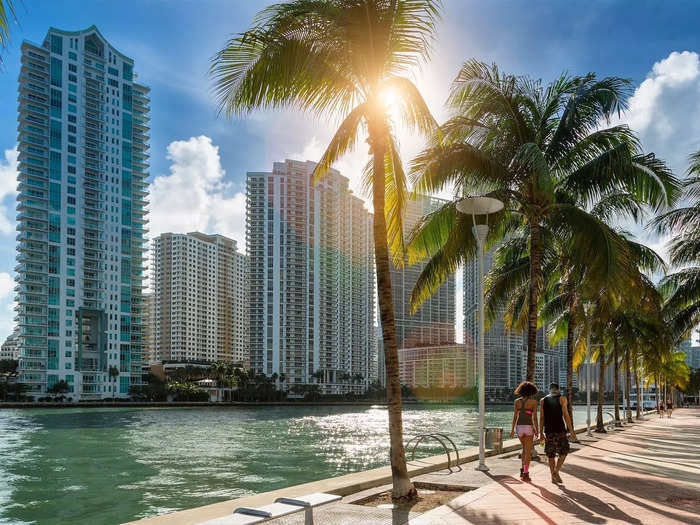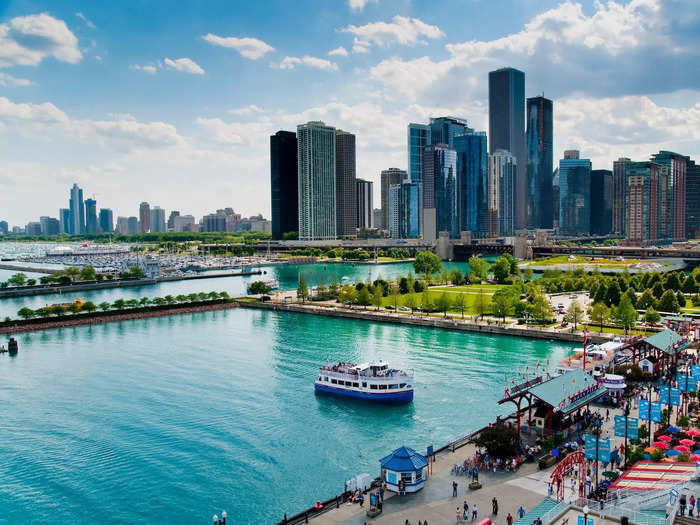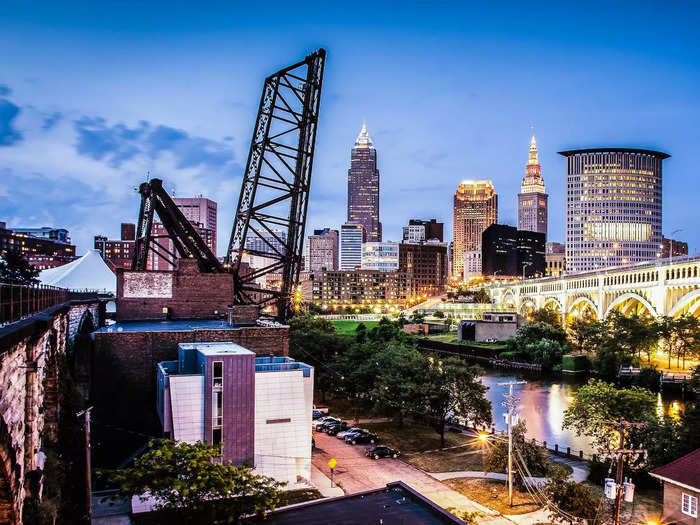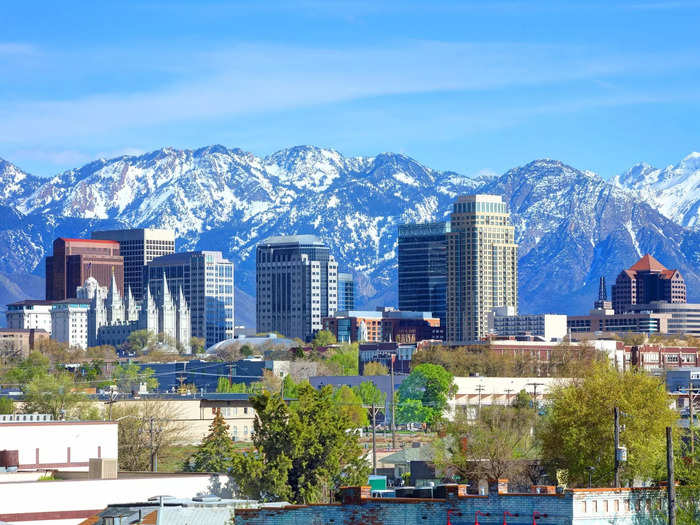Westend61/Getty Images
- Homebuyers appear to be gaining leverage in many real estate markets across the country.
- Approximately 28 million people say they are planning to buy a home in 2023.
After a tumultuous couple of years, the US real estate market is slowly but surely starting to swing back in favor of buyers.
Pandemic boomtowns like Phoenix and Denver have seen their home prices decline steadily, according to data from First American Corporation, a financial services company. As of November 2022, Denver's home prices have declined by about 4% while Phoenix's have declined by almost 8%. A similar story can be told about other western markets like San Francisco and Las Vegas, and Seattle.
At least 28 million Americans say they plan on buying a home in 2023, according to NerdWallet's latest home buying survey. But the prospects of buying a home vary widely depending on which market a buyer is looking at.
Odeta Kushi, the deputy chief economist at First American, told Insider that the data is a lagging indicator of price activity in the markets because the sales contracts were captured months earlier. However, Kushi added that prices are still likely falling in these markets, although the full scope of the declines isn't captured in First American's data.
"During the pandemic, the story was that there was a 'national housing market' because nearly every market favored homesellers," Kushi said. "In 2023, I think we'll start to see that real estate is local again."
1. St. Louis, Missouri
f11photo/Shutterstock
Kushi says that the housing markets most at risk of busting are the so-called "zoomtowns" — cities that saw a significant uptick in homebuyer migration during the pandemic. However, those that kept a good balance between buyer demand and housing supply — like St. Louis, Missouri — remain healthy.
"I think it's one of the areas that continues to experience pretty strong year-over-year growth," Kushi said. "I always come back to supply and demand dynamics. So clearly, something's still going on where demand has been pretty resilient relative to supply."
Nominal home price growth from Feb 2020 to peak: 39.03%
Nominal home price decline from peak to November 2022: 0%
Current median home price: $234,405
2. Miami, Florida
Sylvain Sonnet/Getty Images
"Miami is a resilient market that has had really strong price appreciation over the course of the pandemic," Kushi said. "Those prices have been pretty sticky — downward sticky. That's not to say they won't start to come down but it's one of those markets that hasn't experienced those price declines from the peak."
Nominal home price growth from Feb 2020 to peak: 55.95%
Nominal home price decline from peak to November 2022: 0%
Current median home price: $400,688
3. Pittsburgh, Pennsylvania
The Pittsburgh skyline. Steven Adams/Getty Images
"The way I think about it is the faster they rose, the harder they will fall," Kushi said of the pandemic boom towns. "Oklahoma City and Pittsburgh just didn't have as extreme appreciation over the pandemic as some of these other markets — they are just relatively more affordable on a relative basis."
Nominal home price growth from Feb 2020 to peak: 28.41%
Nominal home price decline from peak to November 2022: 0%
Current median home price: $185,700
4. Oklahoma City, Oklahoma
A night time view of downtown Oklahoma City. Getty Images.
"Many of the markets that have not yet experienced price declines, such as Oklahoma City are not yet considered overvalued," Kushi said. "There are exceptions to this relationship, but generally it seems that the most overvalued markets are correcting the fastest."
Nominal home price growth from Feb 2020 to peak: 36.09%
Nominal home price decline from peak to November 2022: 0%
Current median home price: $214,000
6. Chicago, Illinois
Bob Krist/Getty Images
"Chicago has popped up on our list quite a bit as a market that seems to have been pretty resilient and has not been as frothy," Kushi said of the midwestern metropolis. "I just think it's a market that's been a little bit more stable."
Nominal home price growth from Feb 2020 to peak: 27.37%
Nominal home price decline from peak to November 2022: 0%
Current median home price: $278,875
6. Hartford, Connecticut
Getty Images
"Generally speaking, Hartford is a historically more affordable market compared with larger coastal markets, such as San Francisco, Los Angeles, or Seattle, that have long been among the most expensive markets," Kushi said.
Nominal home price growth from Feb 2020 to peak: 39.74%
Nominal home price decline from peak to November 2022: 0%
Current median home price: $289,500
7. Louisville/Jefferson County, Kentucky
Home to the annual horse racing tournament the Kentucky Derby, Louisville is located along the Ohio River and is one of the Midwest’s largest cities. Getty Images
"Louisville is one of the markets that consistently pops up in our rankings of the most affordable markets in the country," Kushi said. "And there is clearly a correlation between the markets that rank as the most affordable and the markets that are currently seeing the lowest price declines."
Nominal home price growth from Feb 2020 to peak: 30.25%
Nominal home price decline from peak to November 2022: 0%
Current median home price: $225,600
8. Columbus, Ohio
pawel.gaul/Getty Images
Orphe Divounguy, a senior economist with Zillow previously told Insider that housing markets in midwestern cities like Columbus have remained resilient during the pandemic due to their balanced nature.
"When we talk about hot markets in the Midwest, we are not necessarily talking about strong home value growth, and certainly not anything like the record growth we saw in some areas in 2021," Divounguy said. "We are really talking about the Midwest having a healthier balance between buyers and sellers, resulting in more churn."
Nominal home price growth from Feb 2020 to peak: 37.32%
Nominal home price decline from peak to November 2022: 0%
Current median home price: $273,738
9. Cleveland, Ohio
Yuanshuai Si/Getty Images
According to Divounguy, Cleveland has fared well during the housing downturn due to its affordable home prices, which have made homeownership more attainable for renters.
"Home values haven't risen as much in many Midwest and Great Lakes region markets and the barrier to entry is much lower," he said. "While buyers and sellers in most markets are waiting in the wings for macroeconomic clouds to dissipate and for affordability to improve, Midwest markets are relatively more affordable."
Nominal home price growth from Feb 2020 to peak: 34.09%
Nominal home price decline from peak to November 2022: 0%
Current median home price: $181,850
10. Salt Lake City, Utah
Denis Tangney Jr/Getty Images
"Salt Lake City is one of those places that continues to see pretty strong growth year-over-year," Kushi said about the Utah capital. "While I'm not very familiar with the on-the-ground dynamics, I can say that supply and demand seems to be balanced there because the market has been quite resilient."
Nominal home price growth from Feb 2020 to peak: 61.13%
Nominal home price decline from peak to November 2022: -0.23%
Current median home price: $521,918










